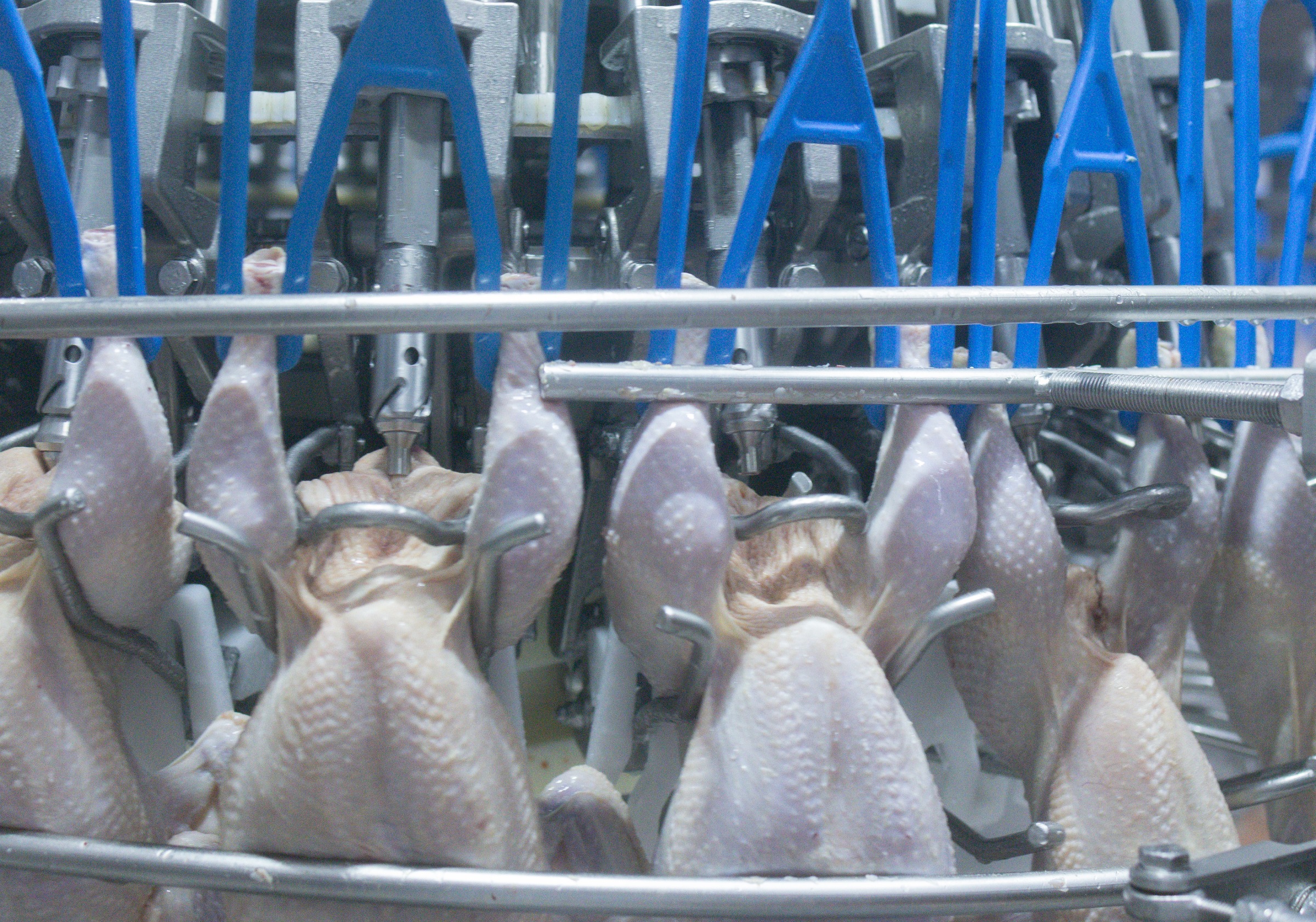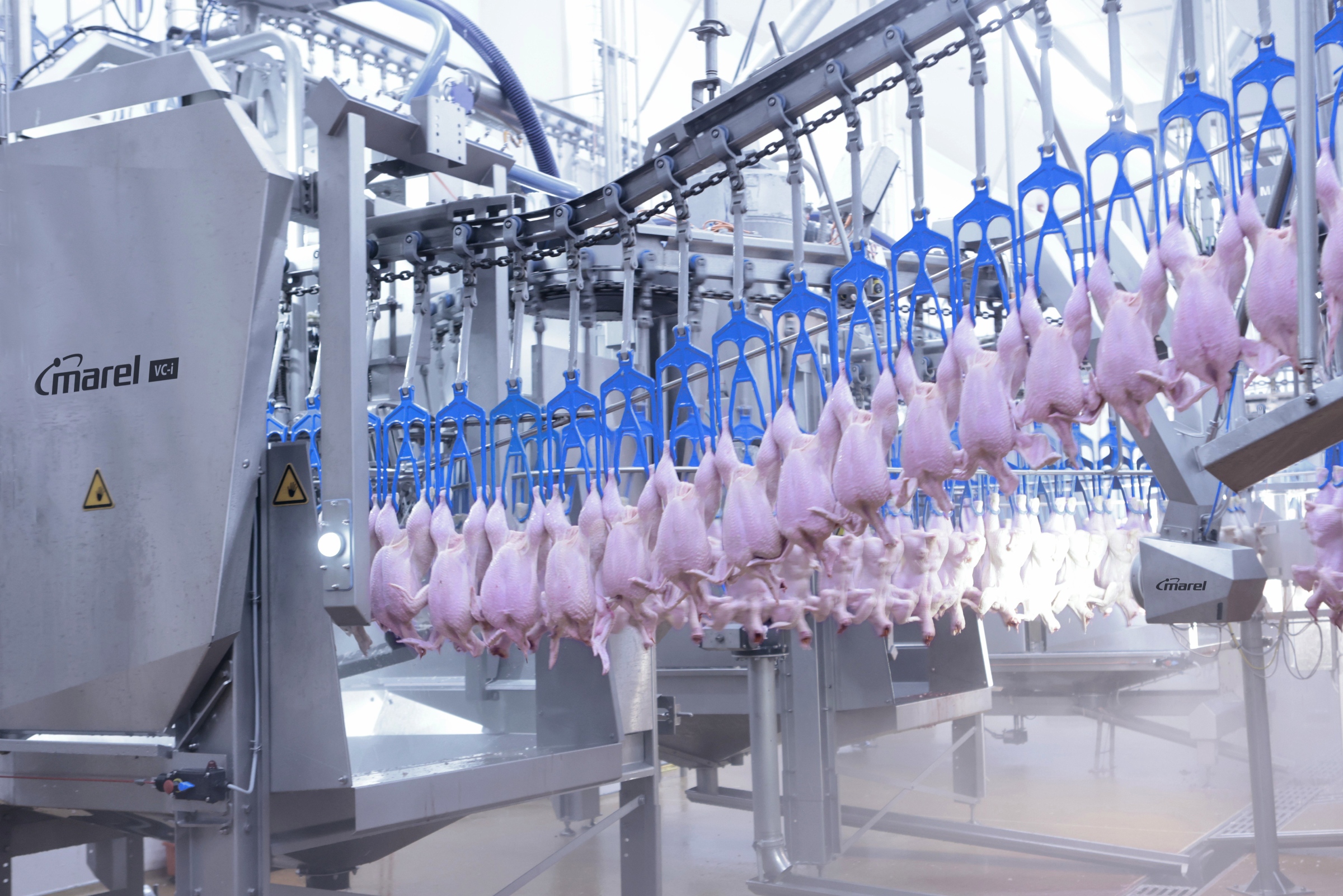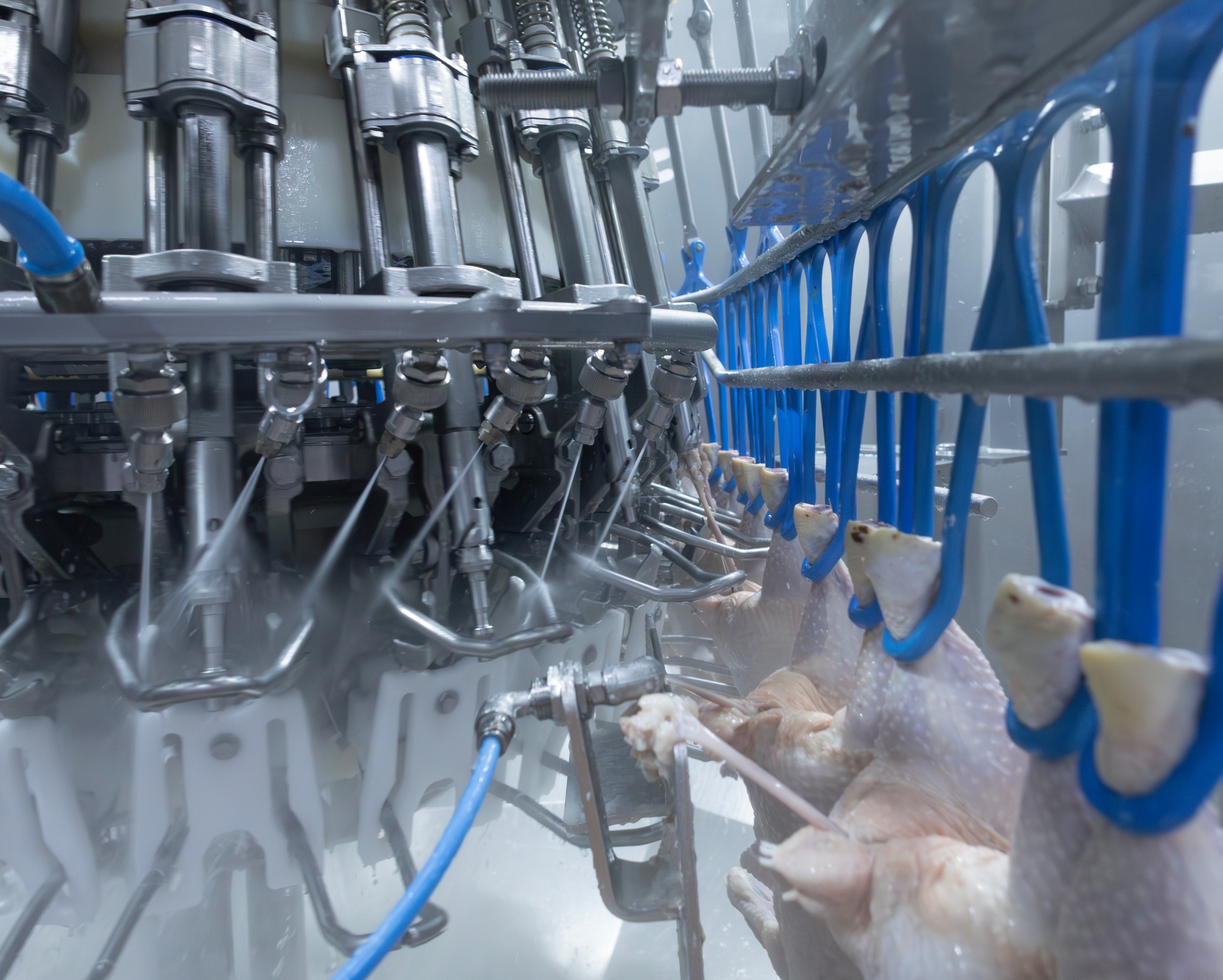4. Why isn’t the cloaca simply cut off?
If the cloaca were simply cut off, the intestines would be left with an open end, creating a serious risk of soiling and contamination. Instead, it is carefully drilled out and positioned on the back of the carcass, remaining connected to the intestines and other viscera still inside. This ensures a controlled and hygienic removal of the cloaca and a proper downstream process. The next machine in the line, the opening machine, works around the positioned cloaca in the direction of the breast. Finally, the eviscerator extracts the entire viscera pack, including the edible giblets, intestines, and, at the bottom end, the cloaca. Only at this stage is the cloaca fully separated from the carcass.
5. How does vent cutting ensure hygiene?
As the first operation inside the carcass, vent cutting requires the highest hygiene measures to prevent exposing the meat to high microbial loads.
Vacuum is applied to the rectum to suck out feces from the end of the digestive tract, minimizing the risk of fecal contamination of the outside or inside of the product. Next, the vent is clamped and a circular rotating blade cuts off the bursa fabricii and urethra, leaving the kidneys and tail intact. The vent is drawn out (while the connection with the intestines still inside remains intact) and placed over the back of the product, a hygienic technique that prevents contamination. This positioning of the cloaca must be correct, so it can be processed efficiently downstream.
Every individual drill in the carousel is rinsed after each insertion and extraction by its own spray washer. In the carousel machine, the pitch between the shackles should be big enough, so products don’t touch each other.
Hygiene focused design helps keep the machine clean during operation. Even simple features such as sloped surfaces can help prevent water or debris accumulation on equipment. Avoiding blind spots also enables the machine to stay clean during operation and a water spray can be used to remove any material that falls on equipment.






